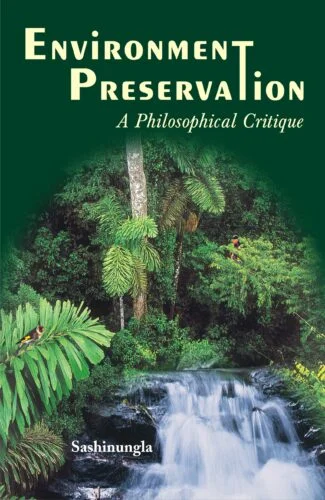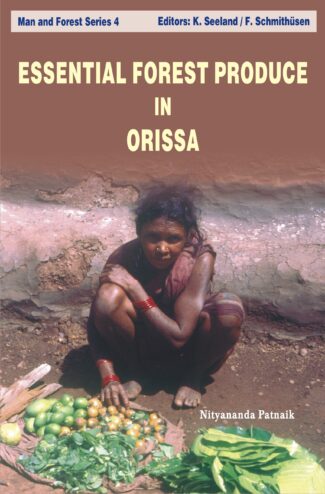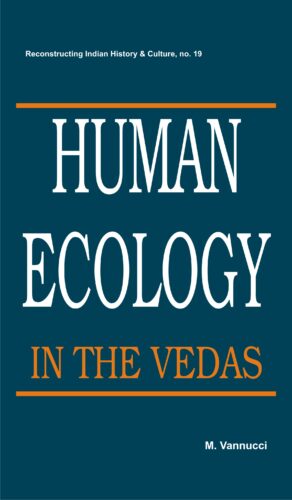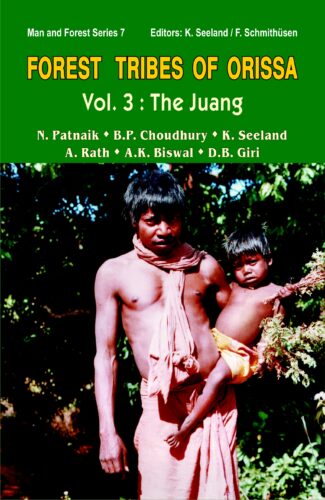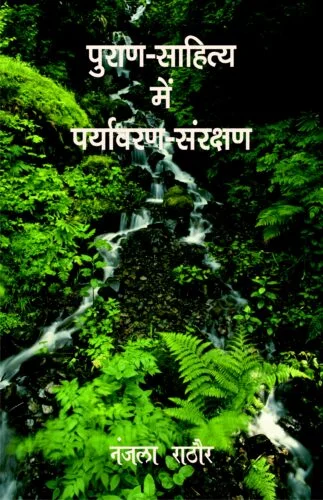

Purana Sahitya mein ...
Purana Sahitya mein Paryavaran Samrakshan
Environmental Protection in Pauranic Literature by: Nanjala RathoreHow important was environment in the ancient times as depicted in the Puranic literatures has been discussed in detail in this book.
₹300.00 Original price was: ₹300.00.₹270.00Current price is: ₹270.00.
ISBN: 9788186921180
Year Of Publication: 2001
Edition: 1st
Pages : xiv, 194
Bibliographic Details : Bibliography
Language : Hindi
Binding : Hardcover
Publisher: Decent Books
Size: 23 cm.
Weight: 450
How important was environment in the ancient times as depicted in the Puranic literatures has been discussed in detail in this book.

- Sale!Environment Preservation by: Sashinungla
₹280.00Original price was: ₹280.00.₹252.00Current price is: ₹252.00.In an integrated and comprehensive framework, Environment Preservation: A Philosophical Critique takes a critical look at the increasing literatures and specific attempts at environmental preservation. The dominant ethical understanding and its preservation strategy, according to the author, is erroneous in itself to serve us with a more evaluative ethics to the present environmental crisis because its idea of Nature itself can also tend to be limited. The author turns away, therefore, from the sole western anthropocentric polemic and explores the traditional tribal understanding of the close correlation between man and his environment for a new dialogue in philosophy. The book will be imperative both to students at various undergraduate and post-graduate levels as well as to researchers. It will also interest anyone who wants to delve deeply into the philosophical issues of Nature preservation..
- Sale!Essential Forest Produce in Orissa by: Nityananda Patnaik
₹450.00Original price was: ₹450.00.₹405.00Current price is: ₹405.00.This volume is the 4th in the ongoing Man and Forest series a series trying to highlight the relevance of indigenous knowledge of various tribal communities in the sustainable management of forests and local resources more specially against the growing challenges of economic development vis-à-vis environmental hazards and a declining resource base. Orissas forests, covering a little over 57,000 sq km (or 36.72% of the states geographical area), are known to have a profusion of minor forest produce (MFP) which has been upgraded due to its importance for tribal livelihood and is called Essential Forest Produce (EFP) through the book. It comprises simple fodder and fuelwood to baffling medicinal herbs, besides numerous economically important plants yielding dyes, tannin, fibres, flosses, essential oils, edible fruits, seeds, leaves, honey among many other items. Yet, despite its enormous economic potential, about three-fourths of this forest wealth has so far been unutilized by the tribal communities largely because of its inaccessibility. With a holistic product profile of Orissas forests, an eminent anthropologist here looks for the rationale behind the vastly deficient utilization of its EFP identifying the entire range of causes: from the tribals incapacity to reach this forest resource to their exploitation by middlemen/traders/moneylenders to the larger forest policy issues. Dr Patnaik also proposes measures which would help tribals not only to actualize the inherent potential of EFP but, in turn, strengthen their economy as well. It is a painstaking empirical study of interest to social anthropologists, environmental activists, foresters, development economists, forest resource economists planners and policy-makers.
- Sale!Human Ecology in the Vedas by: Marta Vannucci
₹1,200.00Original price was: ₹1,200.00.₹1,080.00Current price is: ₹1,080.00.Directing his view towards the whole universe holistically, amazingly, the Rigvedic man as this study shows was awakened to the cosmic Law and Order (Rita); he saw how nothing: nature, environment, or the universe itself, was ever static; and how the orderly Energy was at the root of all changes and movements. Instinctively, he not only bowed down to the Order that reigns supreme, but also tried to attune himself, his behaviour, and his everyday activity to the eternal laws of the universe. Which, says the author, he recognized as his dharma. A sequel to her earlier, well-received title: Ecological Readings in the Veda, Dr. Marta Vannuccis this book sets out fresh, insightful analyses of the Vedic writings to highlight the ancient rishis perceptions of the Universe, Nature, and cause-effect relationships; and how, millennia ago, these sages came to revere, even adore, Nature in its different manifestations and, wittingly or unwittingly, evolve an environmentally friendly culture. In support of her findings, the author also analyses a few selected hymns from the Rigveda, using a biological key to decode these songs. Additionally, she also explores some important aspects of two Vedic gods: Indra and Varuna, who respectively represent the material and immaterial reality. Highly relevant appendices apart, the book includes a comprehensive glossary of Sanskrit/non-English words and numerous bibliographic references.
- Sale!Forest Tribes of Orissa Vol. 3: The Juang by: Nityananda Patnaik, B.P. Choudhury, Klaus Seeland, A. Rath, A.K. Biswal, D.B. Giri,
₹900.00Original price was: ₹900.00.₹810.00Current price is: ₹810.00.In the management of renewable resources, forests have undeniably a vital role, and today, as never before, their conservation is an urgency. In view of this dire necessity the series Man and Forest tries to highlight the relevance of indigenous knowledge of various South Asian tribal communities in the sustainable management of forests/local resources more specially against the growing challenges of economic development vis-à-vis environmental hazards and a rapidly declining resource base. A scientific inquiry into indigenous knowledge is an effort to discover/rediscover the tribals’ traditional modes of production and conservation. For them it is the only source to cope with the problems of modernity affecting their lives and precarious environments. Forest Tribes of Orissa: The Juang is the seventh monograph in the series Man and Forest and, after the publication of an account of the forest world of the Dongaria Kondh in 2002, and the Kuttia Kondh in 2006. Being a tribal community in transition, the authors have tried to document and thus safeguard its local traditional knowledge of conservation, use and management of forests and natural resources. They give an account of how the Juang classify trees and other plants, hills, forests, crops and animals. Their subsistence economy, agricultural system, social organization, religious beliefs and other important socio-cultural aspects of forest life have been extensively treated. The lifestyle of this tribal community is finally reflected on the background of forest policy and the impact it has on their livelihood. The present book is, as most of the volumes in the series, the outcome of nearly ten years’ research venture involving an interdisciplinary, intercultural team of sociologists, ethnobotanists, and social anthropologists
- Sale!Environmental Conservation in Western Himalayas by: R.V. Singh
₹495.00Original price was: ₹495.00.₹446.00Current price is: ₹446.00.Spruce and silver fir forests play a quintessential role in environmental conservation in the eco-sensitive zone of western Himalayas forming catchment areas of many important rivers originating from and flowing through these mountainous areas. Working these forests under different silvicultural systems tried to develop suitable silvicultural treatment for these forests did not prove satisfactory, and appropriate silvicultural and management practices remain to be developed.
Overexploitation of these forests in several areas resulted in serious soil erosion and environmental problems. Sustainable management of spruce and silver fir forests is critical for environmental conservation in this region.
The book deals with past management of spruce and silver fir forests in western Himalayas, problems in regenerating these forests and artificial regeneration methods developed and adopted. It also vividly analyses the impacts of different management practices on the effectiveness of these forests in environmental conservation. The book should enthuse environmental conservationists, nature lovers and researchers interested in the study of the Himalayas.



